The tea ceremony was like being in a microcosm of the universe. The peaceful tea room looked out onto the seasonally decorated garden, and I had an experience that made time melt away.
“Please, sit.”
We were welcomed by Ichiko Horiguchi of Cha-Su-Ru, a tea master based in Kyoto and Shiga Prefecture. She holds tea classes and tea ceremonies all over Japan and explores the possibilities of tea through her research on natural teas.
In the spring I was enamoured by a tea ceremony she ran in Shiga, and decided to attend another one of her workshops in May to learn more from her. This article will introduce the time I spent with Horiguchi while attending her tea ceremony and tea workshop.
Tea Time that feels akin to traveling to abroad

Upon entering the tea room and sitting down, Horiguchi started burning incense in a hibachi brazier and rang a bell. We closed our eyes for a while and listened to the sound.
Several different varieties of tea leaves were lined up on a round table along with unique tea utensils and bowls. When we opened our eyes, a small world had unfolded in front of us, unlike anything we had seen before. It was the start of a moment to savor the seasonal plants that Horiguchi made into tea, along with Chinese teas that she collected while traveling around Japan and abroad.
Horiguchi’s tea ceremonies generally last two hours. Initially, I thought that two hours was a long time to spend with just tea. Perhaps this was because I live a busy and hectic city life–constantly carried away in a stream at full flood.
However, such concerns soon disappeared. The first tea that surprised me was the Japanese butterbur tea.

As soon as Horiguchi poured hot water in the pot, the fresh aroma of the Japanese butterbur filled the room.
Japanese butterbur is an edible wild plant that appears as soon as the snow melts and can only be enjoyed in early spring. When made into a tea, it traps the fresh scents of spring into the leaves.
The next tea was San Qing tea, a blend of plum blossoms, Buddha’s hand citrus, pine nuts, and Chinese green tea.
It had a soft and fragrant aroma of the plum blossoms, while the sourness and bitterness of the citrus peel followed slightly after. The tea had multiple, deep layers of flavor.

As various teas followed, including hand-rubbed black tea from Koshoji Temple in Uji, Kyoto, mint tea from Okayama, and Lapsang Souchong, a Chinese black tea, the time was filled with a rich and diverse tea experience.

One after another, we were presented with tea that we had never encountered before.
The evolving flavors between the first and second rounds of each tea was also surprising. Horiguchi’s refined sensibility was also expressed through her carefully chosen tea utensils and tea sweets.
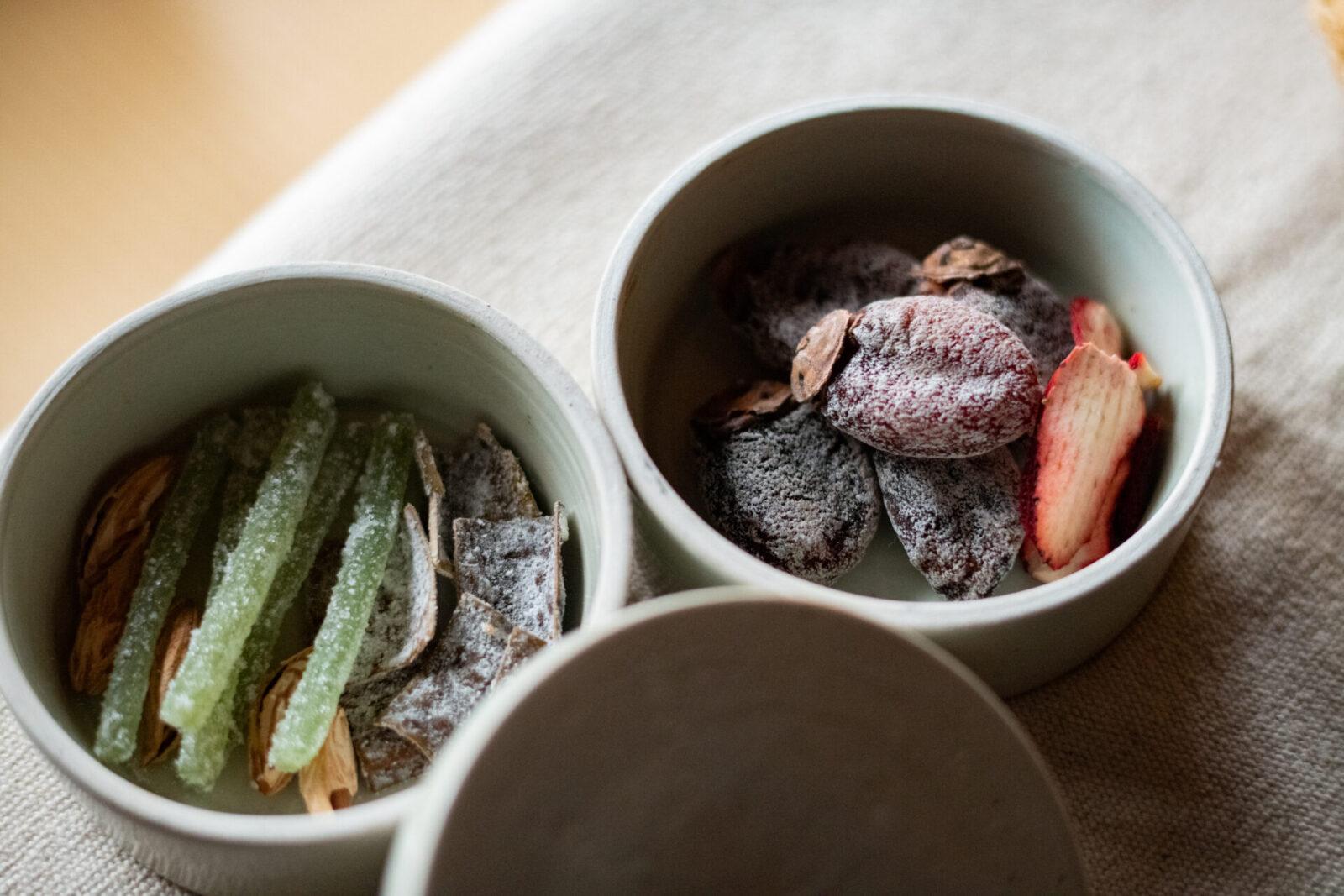
The final tea was a white tea that she picked on the day of a new moon at Mitsui Temple in Shiga.
Horiguchi smiles as she explains, “The flavor of tea changes depending on if it is picked at full moon or new moon.”

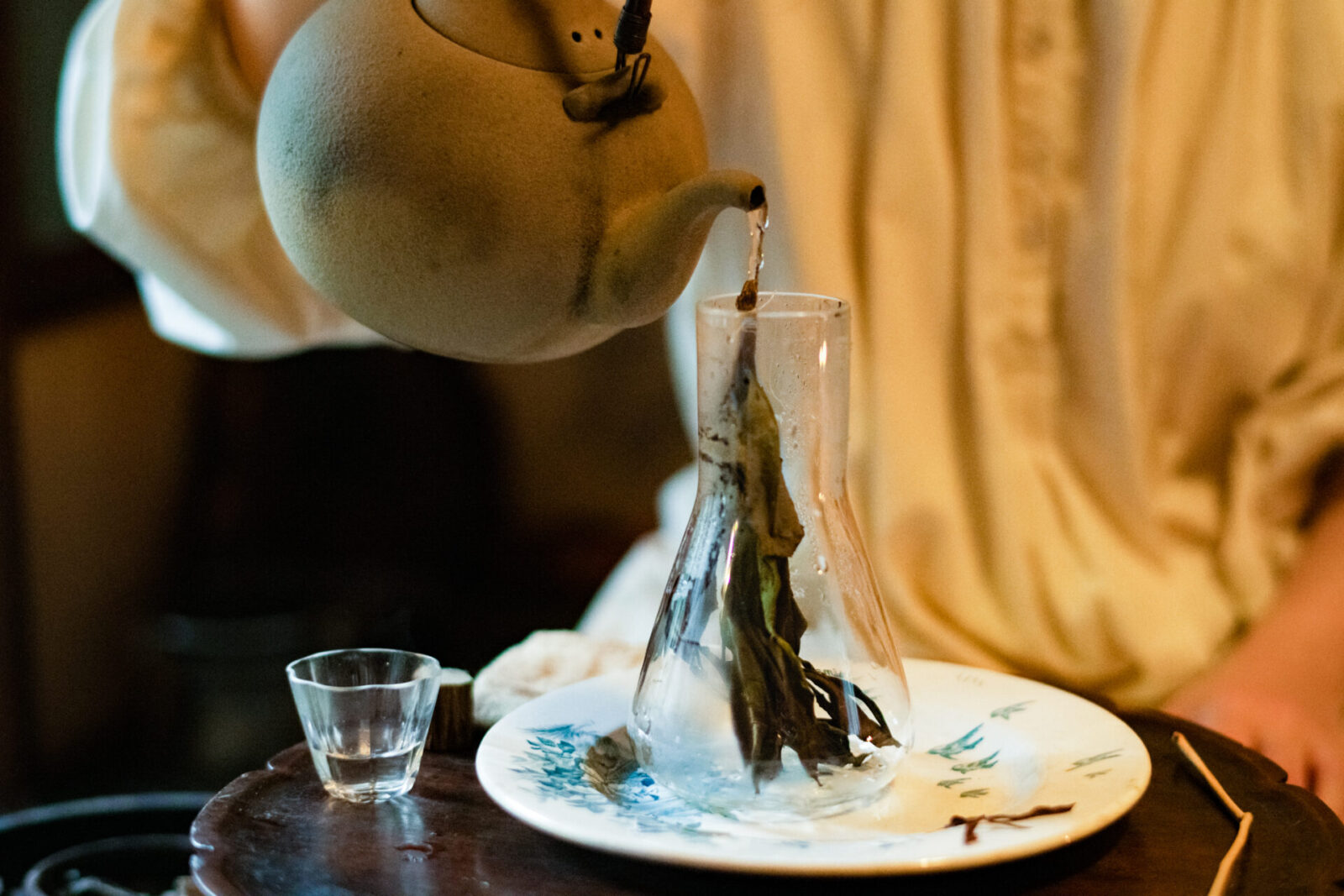
Although the room is quiet, I found myself dizzy from the emotions conjured by this experience. I asked Horiguchi what she wishes to express through her tea ceremonies.
“I simply collect the tools that I think match that season and moment, tidy up the space, and serve tea. It is not my style to be intentional. I simply wish to serve tea that naturally matches the seasons.”
“I have no desire to make a point. People are moved by different things at different times. Some people may not feel anything at all. I’m sure there are people who may feel bewildered by the experience. I am not good at calculating anything, so I just present things as they are.”
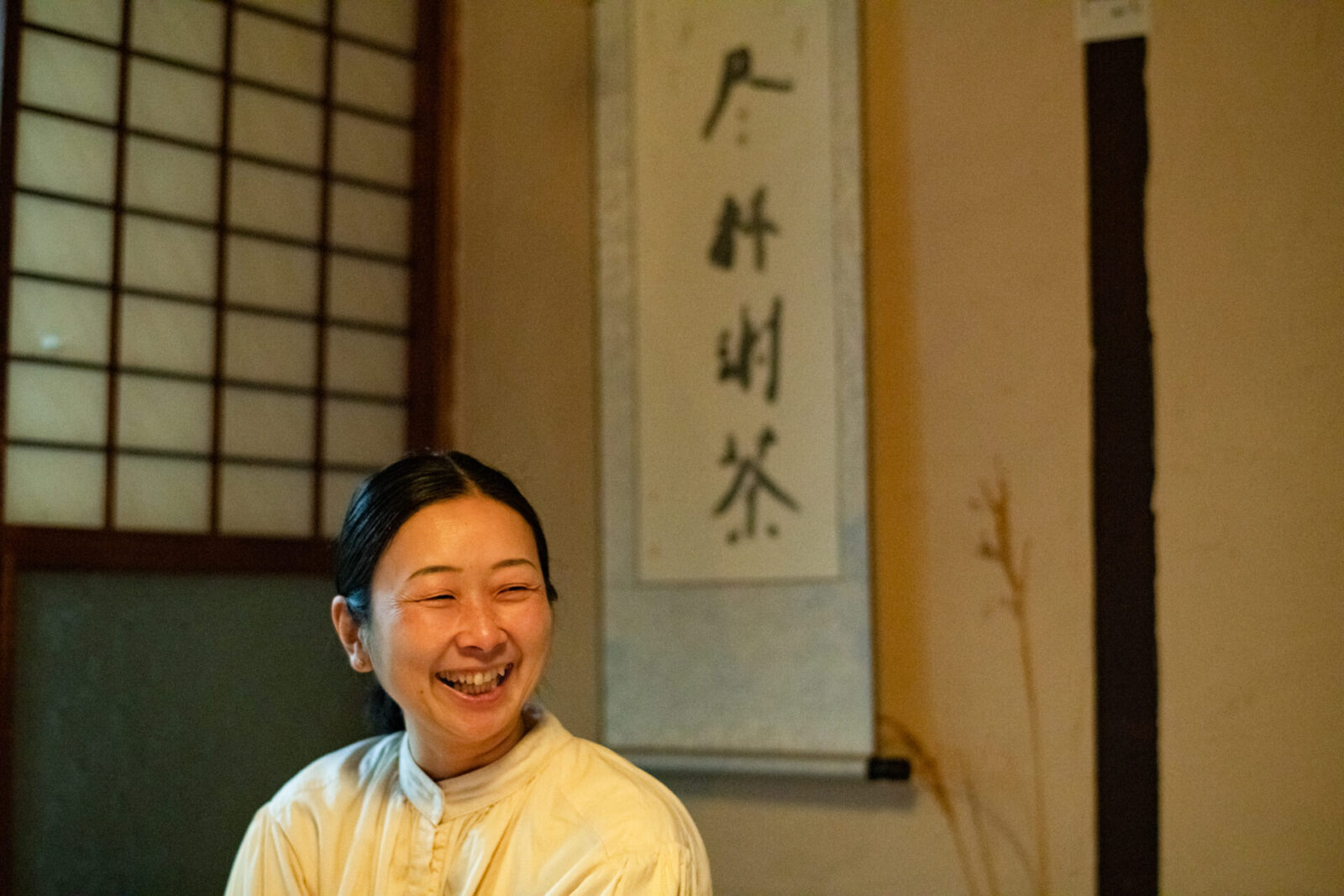
As we indulged in the seasonal teas using all of our five senses, the two hours passed by quickly.
The tea room was like a microcosm of the universe, and felt like traveling to an unknown and foreign land.
Picking and processing tea leaves on the spot
Two months after the tea ceremony, I traveled to Shiga to attend a workshop on picking and processing tea leaves. In the garden of a woodworker, we picked leaves of a chanoki (tea tree), roasted them, and drank tea.
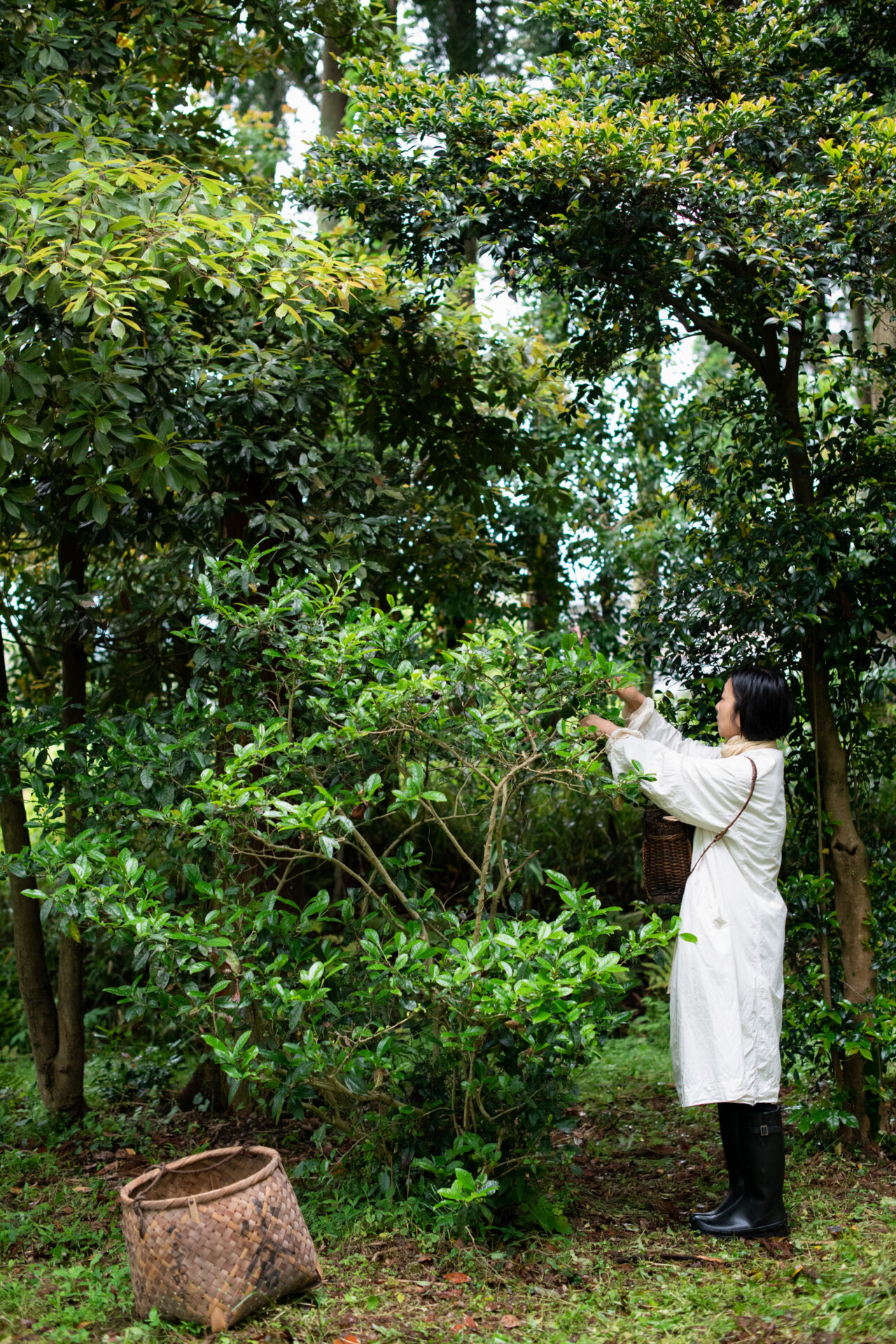
There was a slight drizzle that day, and Horiguchi led us to the chanoki tea tree to show us how to pick the young tea buds.

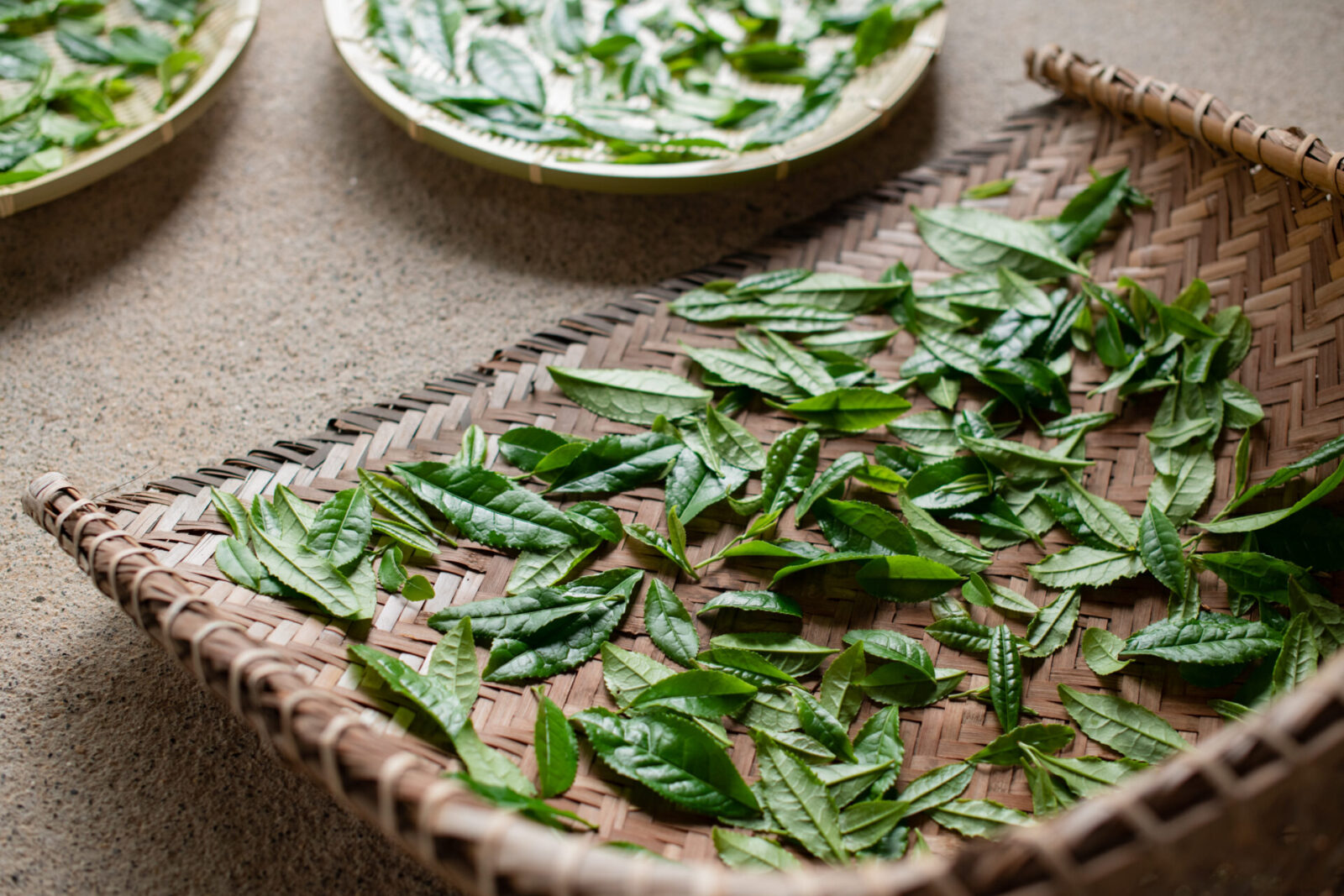
Expressing space through tea ceremonies
After picking the tea and leaving the new leaves to dry, we had some time to talk and learn more about Horiguchi.
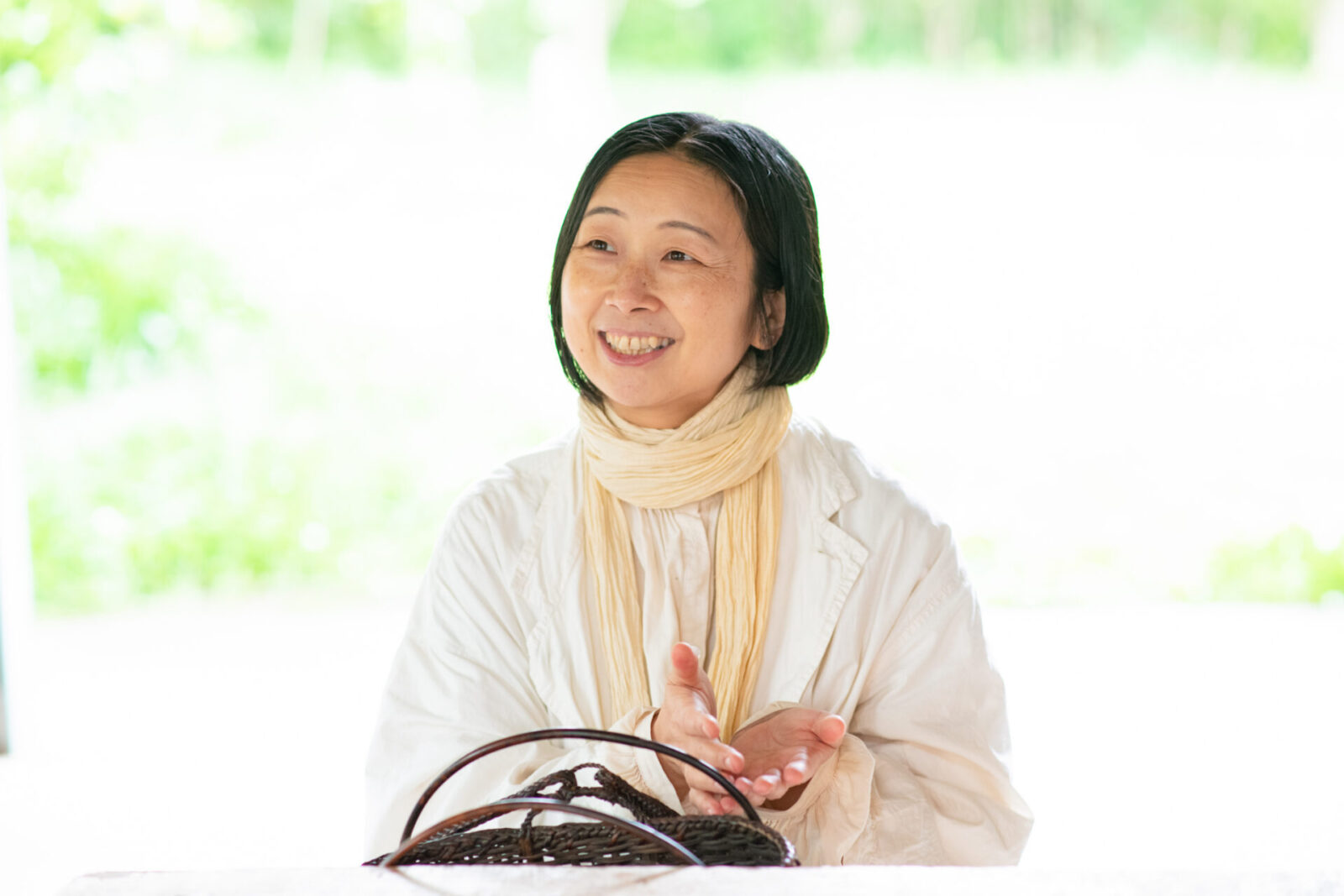
She attended an art school in her 20s where she studied drama, film, and music. Although she had a wide range of interests, she struggled to find what she truly wanted to express.
“My friends at the art school were all making decisions on what to pursue, be it photography or illustrations. I had no idea how to decide, so I started with sketching, but I was not satisfied with working on a two-dimensional surface so I took a class on three-dimensional design. There, I tried cutting wood and making shelves.”
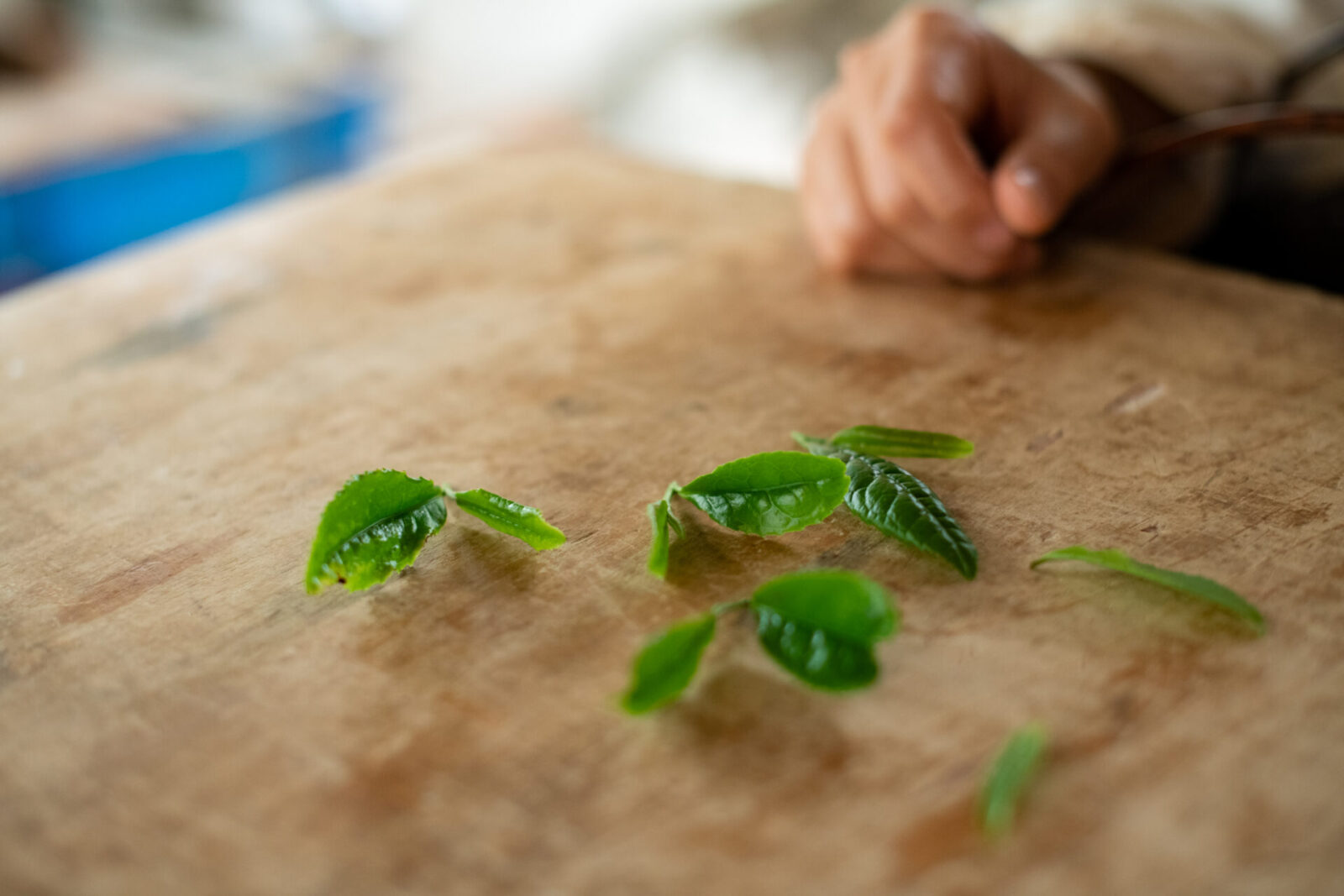
But when time came to putting her work on display at the students exhibition, something didn’t feel right. So, Horiguchi decided to put cloth, plant seeds, and branches on the wooden shelves.
“In that moment, I realized that my desire was to express ‘space.”
“My teacher who saw the exhibition said to me that my work was like Rei Naito. I didn’t recognize the name of the artist at the time, but I liked the sound of her name. Later, I happened to come across a collection of her work. I began learning about installations and was happy to find a worldview that I really appreciated.”
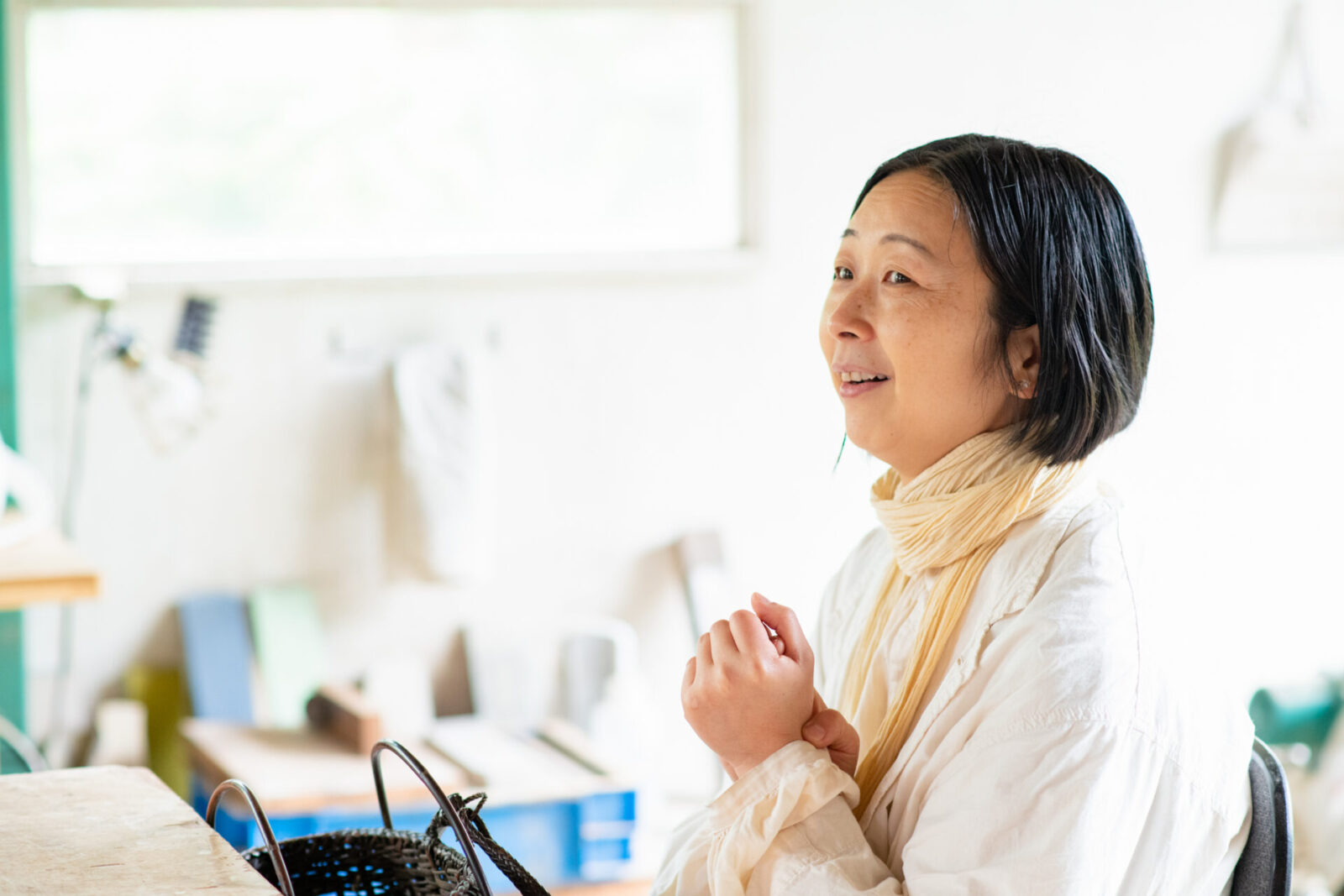
Chance encounters with her tea teacher and others in the tea industry later led Horiguchi into the world of tea. When she was helping a tea ceremony in an art museum by Huang Aki, the leader of the Chinese Tea Association Mucha Kucha, she met Rei Naito by conincidence.
“Coincidently, she was visiting the museum and walked right up to me, so I made her a cup of tea. It made me so happy. I am still very much influenced by her work. She really expresses the essence of what it means to live, and I have a lot of respect for her.”
Coming back to tea, even in hard times
Although Horiguchi is a successful tea master, she shares that she was “never very confident.”
“When I turned 30, I opened my own tea house but I had to close it after a year due to financial reasons. However, I really enjoyed designing the interior and creating my own space. Looking back on the experience, I like to think of it as a slightly long exhibition that I did.”
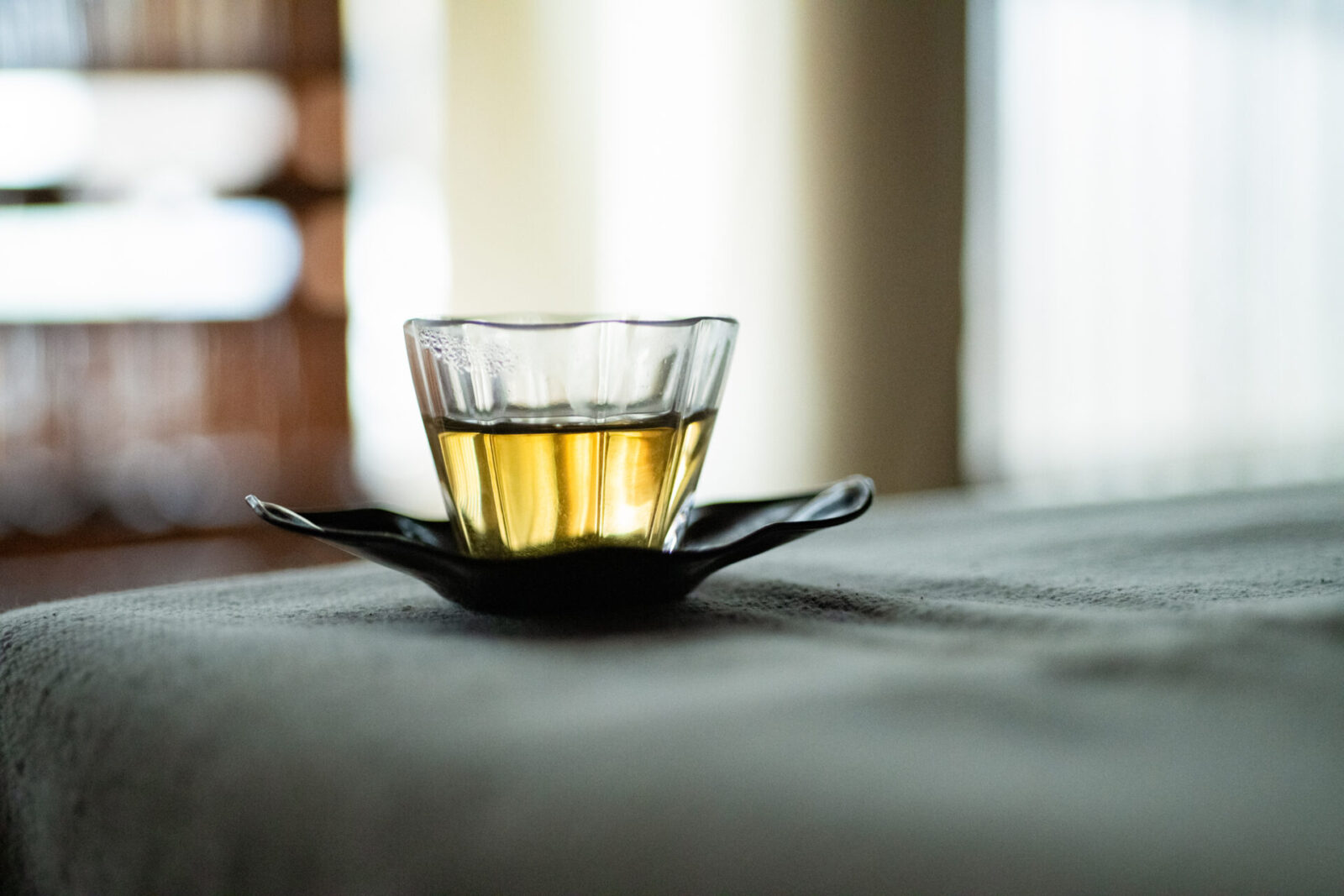
After closing her tea house, she worked different jobs and cared for her elderly father. While working in a job with bamboo tea tools, the toll of both working and caring for her father became too much so she quit her job and became independent.
Horiguchi says, “Whenever I am faced with hardship, I always come back to tea.”
“When I faced a turning point in my life and I felt I was at rock bottom, my friends around me encouraged me to do tea again. Tea helped me rediscover myself. It is all I knew so I wanted to do my best at it. I was determined to stay in the world of tea.”
One connection led to another as she held various tea events. Her tea ceremonies were highly acclaimed and she started to get invited to various tea events around Japan. Because she dedicated her focus on tea, her connections in the tea world grew naturally.
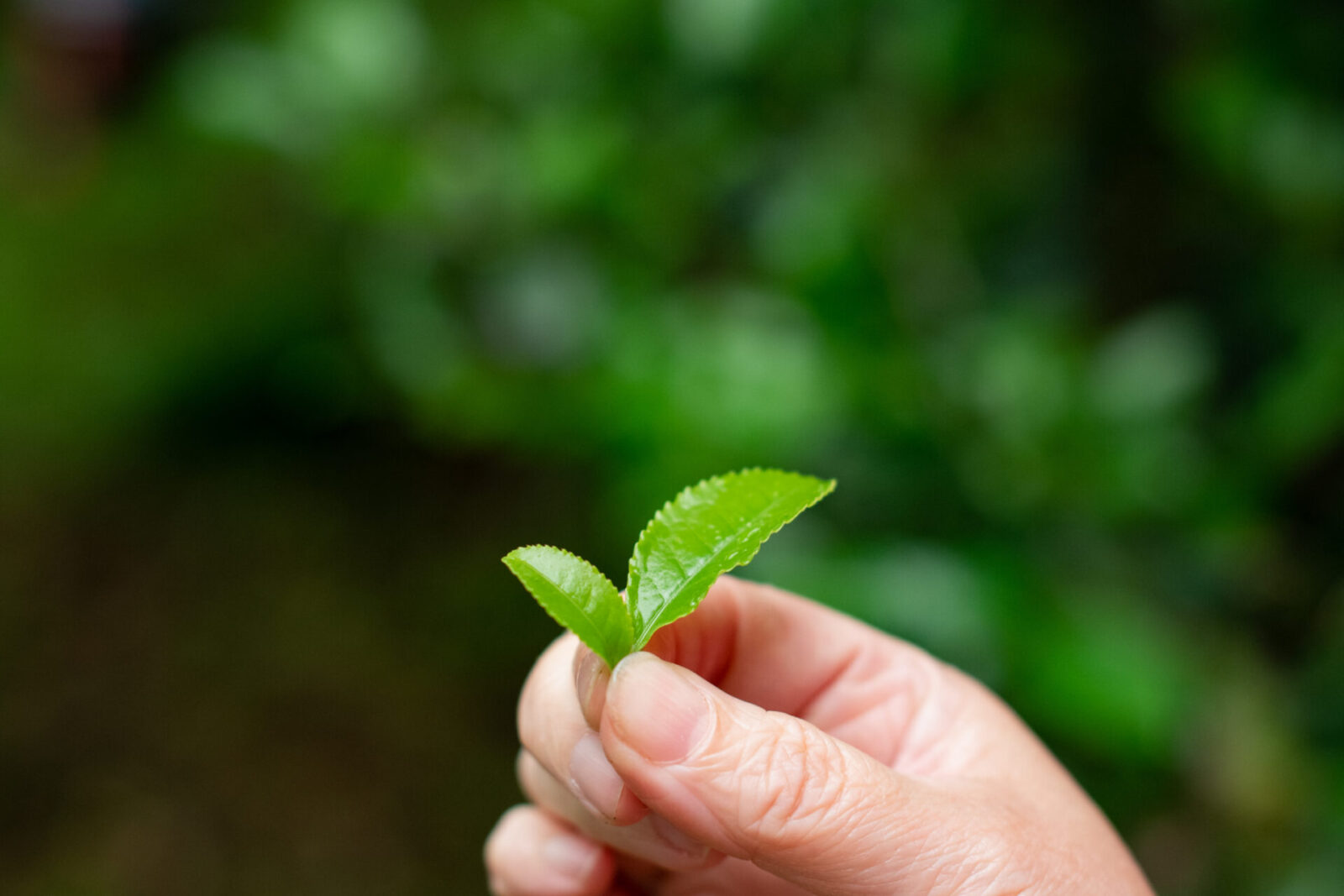
Brought together by the pandemic, finding tea at Mii Temple
In the spring of 2020, the novel coronavirus pandemic hit and all tea events were canceled. Horiguchi suddenly found herself at a standstill with an empty schedule.
“At first I worried about the future. One day I was walking along a nature trail near my house, and as I walked deeper into the woods, I came to a place full of tea trees. I wondered what kind of tea trees they were. I wondered why there were so many. Was it the remains of an old tea plantation?”

The path was one that led to Mii Temple, the head temple of the venerable Tendaijimon sect. She secretly picked tea leaves, roasted them in a pot and found that it made surprisingly delicious tea.
“I realized I should get permission from the Mii Temple, so I nervously knocked on their door. Since I visited them without an appointment, they initially thought I was pretty suspicious.”
Horiguchi asked them if she could pick the tea leaves of the many tea trees in the area, and they said yes and told her to contact the main office for details. She picked some leaves and roasted them in her home. Then, she called the main office and asked if she could go to the temple to make an offering.
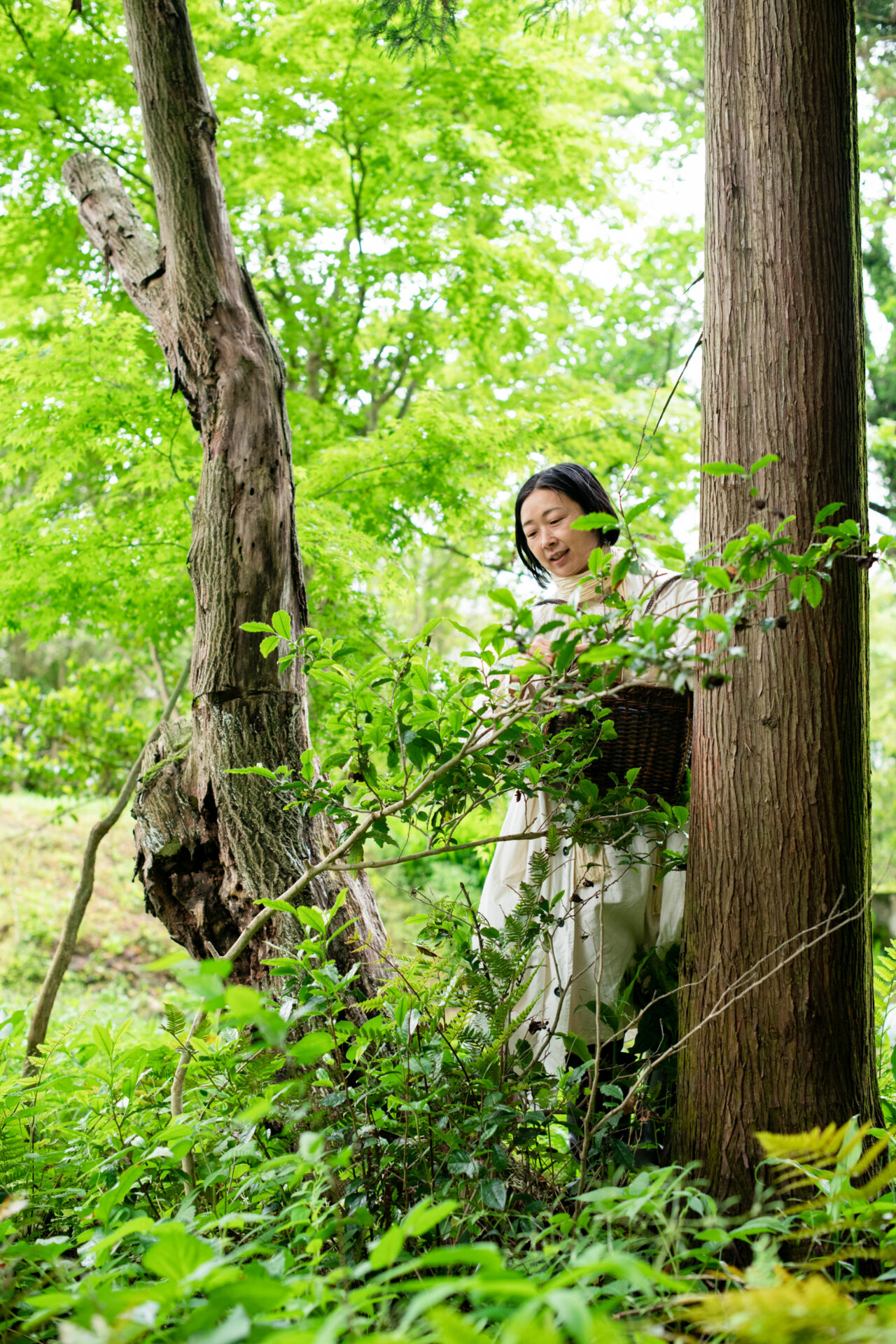
“The people at the temple told me that that would please Buddha, so I decided to offer my tea. The person at the temple was quite knowledgeable about Chinese tea and I told them that I also make Oolong Tea and offered to make it for them. After that, they invited me to come anytime to make them tea.”
“The person I met on my first visit was the son of the person I spoke on the phone with. When I went to make them Oolong Tea, they were both impressed and happy at how delicious the tea made from their tea trees was.”
“These two people happened to be the head priest of the temple and his son. They were the representatives of the Mii Temple.”
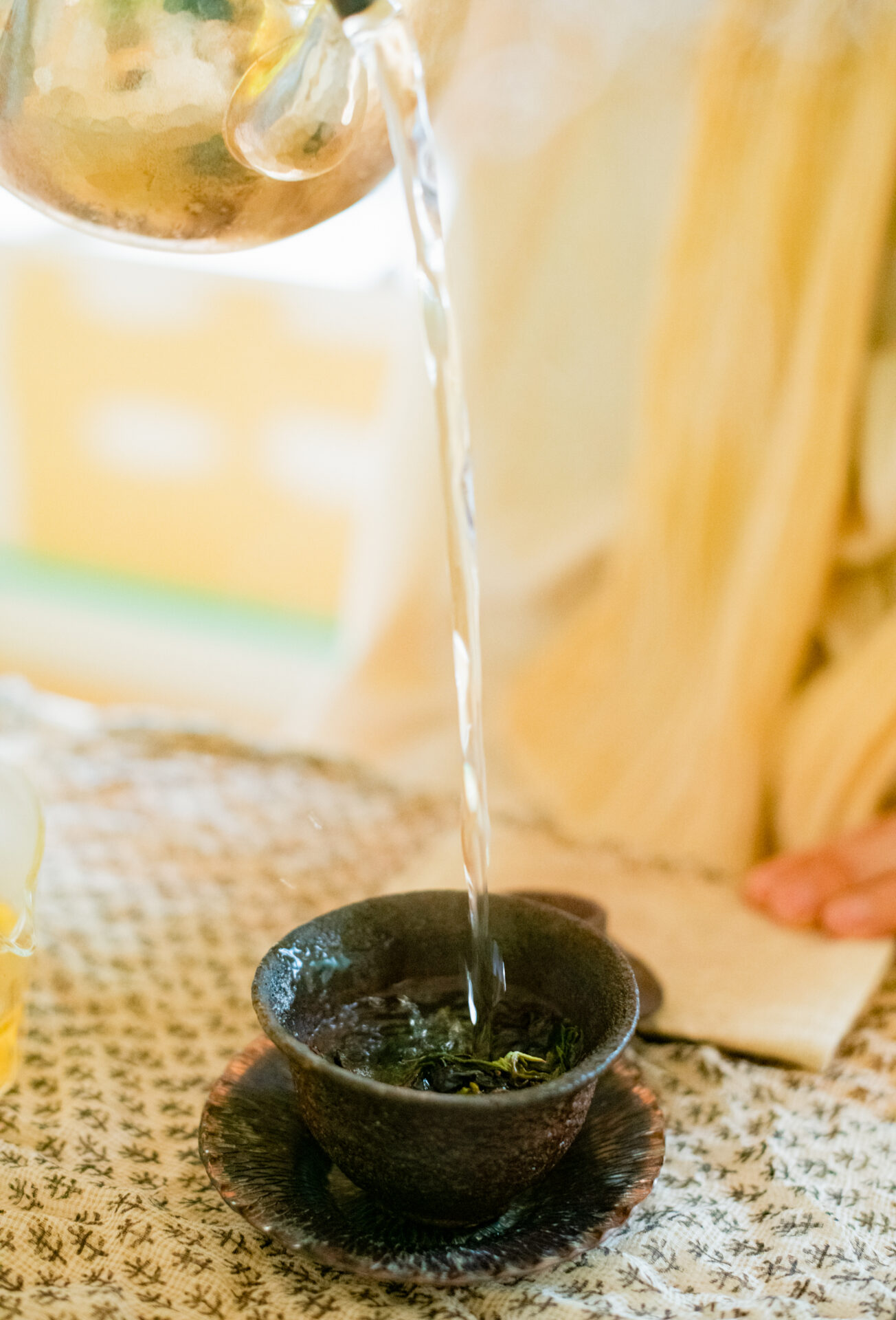
They told Horiguchi of other fine native tea trees found at Mii Temple and gave her permission to pick them anytime. With the backing of the Mii Temple, she was now officially recognized.
“The tea that I made at Mii Temple was so wonderful, I expressed my desire to preserve the tea trees for future generations and spread the word about them. Ever since, I have been holding tea ceremonies and events at Mii Temple.”
Horiguchi organized the Shikan Tea Ceremony, an event where participants purify their body and mind through shikan meditation (shikan is the Tendai sec’s word for zazen meditation) at the priest’s training grounds, visit the tea tree plantations and drink the Mii Temple tea.
They began the “Shikan Tea Ceremony” in 2020 and there is no end to the number of people waiting to participate.
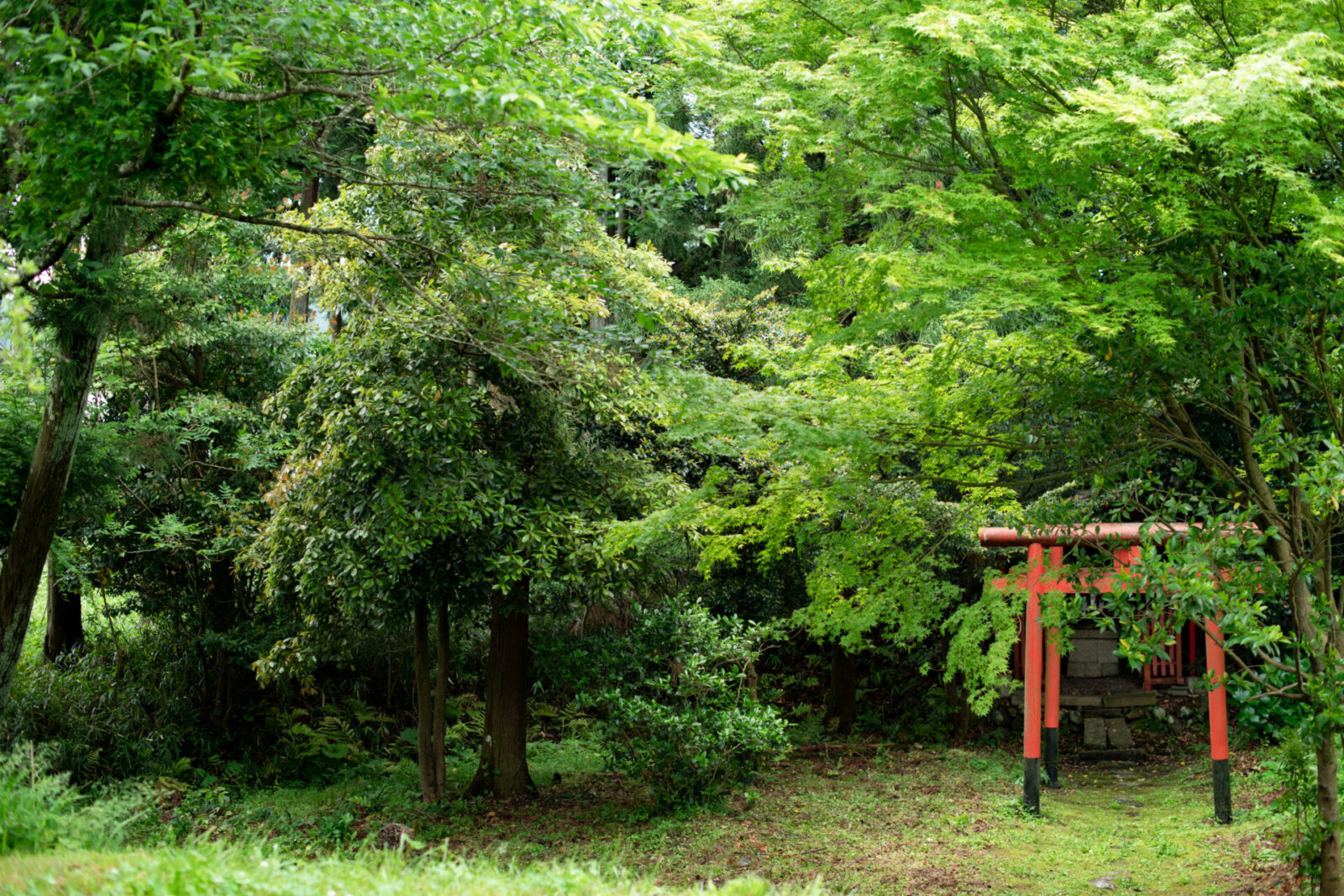
Horiguchi says that she found a deep connection between tea and Buddhism from her relationship with Mii Temple built over tea.
“I think the act of picking tea leaves, preparing it yourself, and drinking it becomes a source of energy for life. A mere leaf becomes a wonderful drink. Tea was originally intended as a medicinal herb and I see my students becoming revitalized through tea. I believe there is deep knowledge behind that.”
“I feel that the tea trees that were left alone for so many years are now giving us the energy that they have preserved over time.”
Although the tea from Mii Temple is not fancy, there is a deep and delicious flavor that comes from the old and aged trees. For Horiguchi, the pandemic led her to encounter this tea–a true treasure.
Picking and drinking tea creates energy for life
After the interview, Horiguchi took the tea leaves that we picked during the workshop and showed us how to roll them by hand.
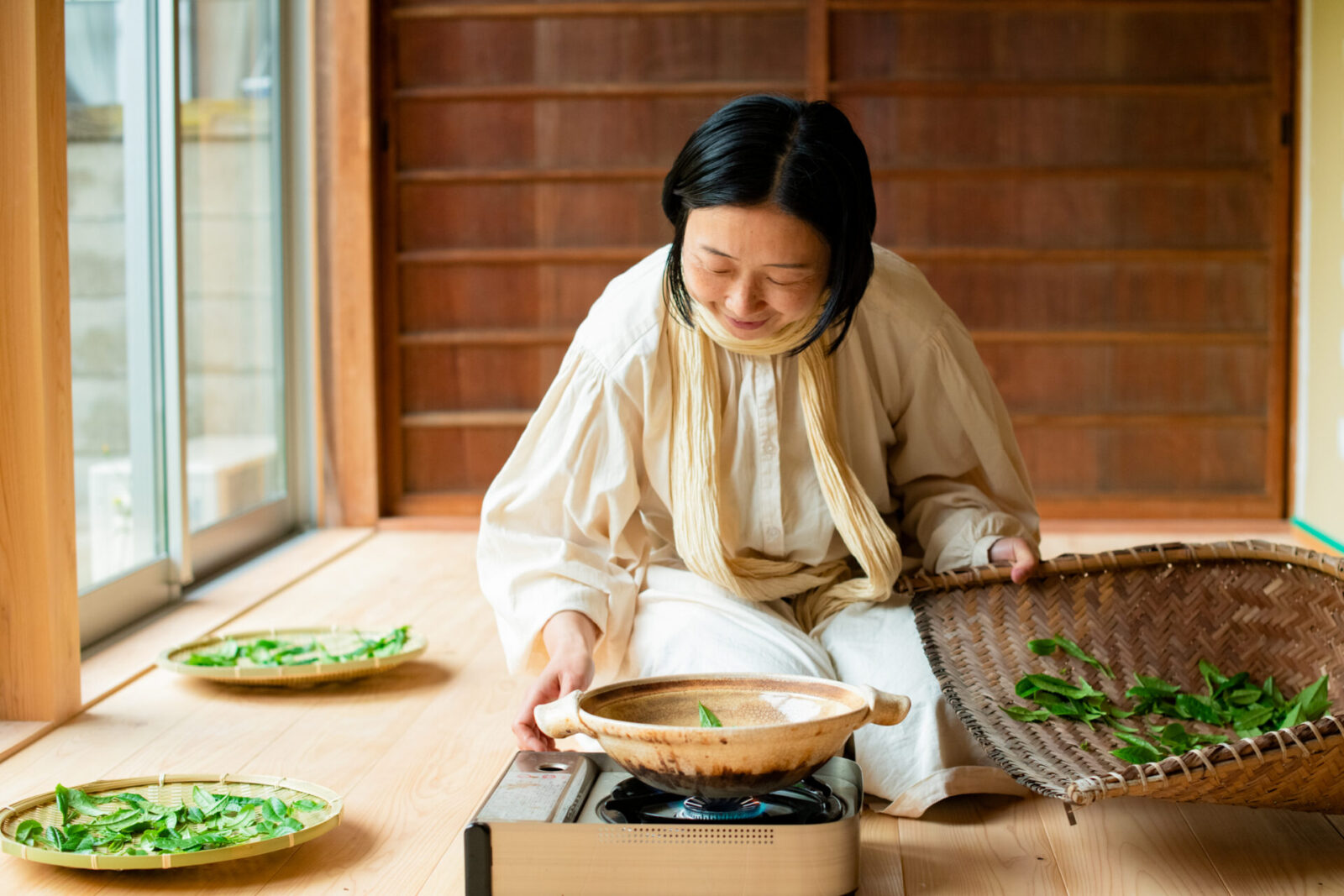
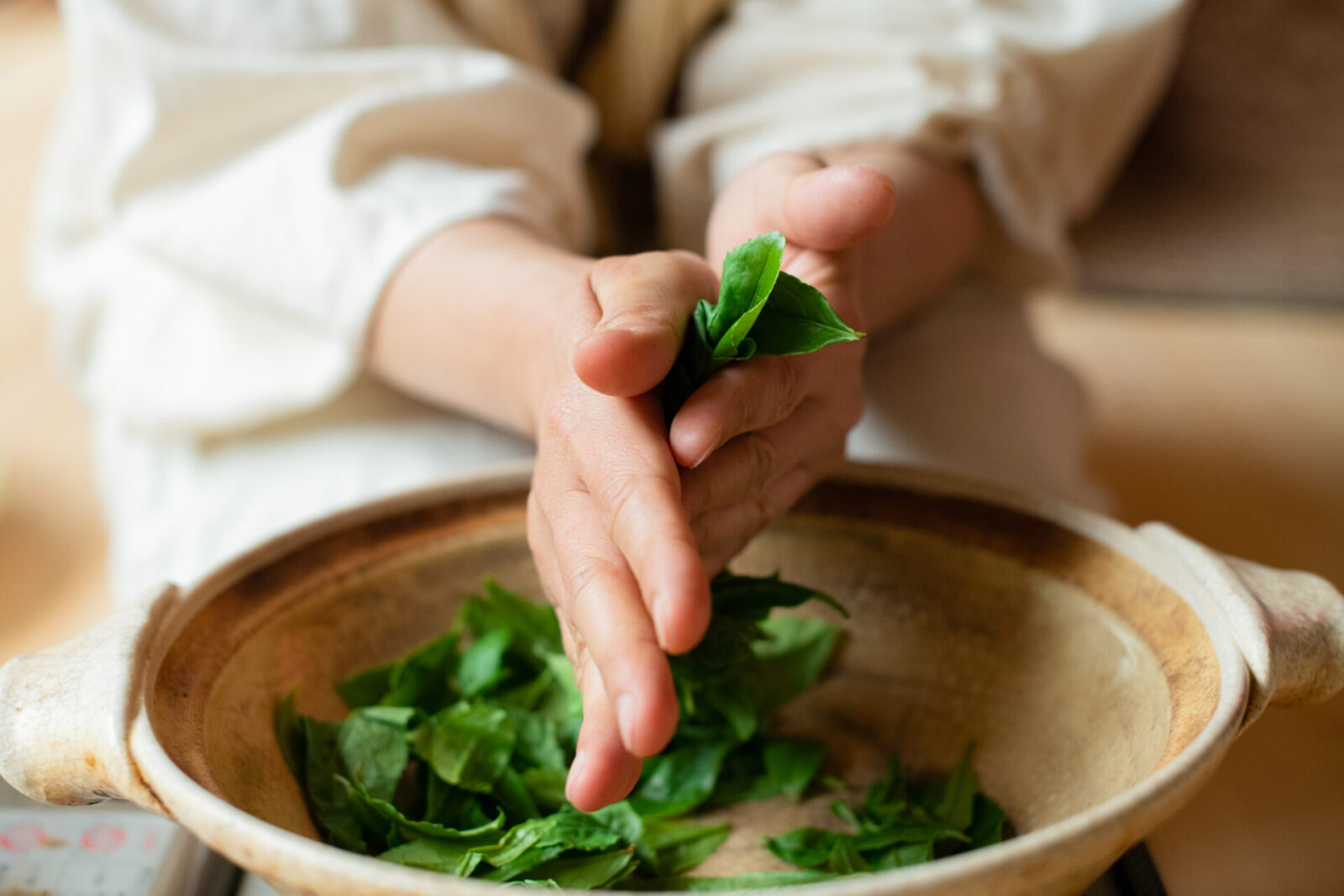
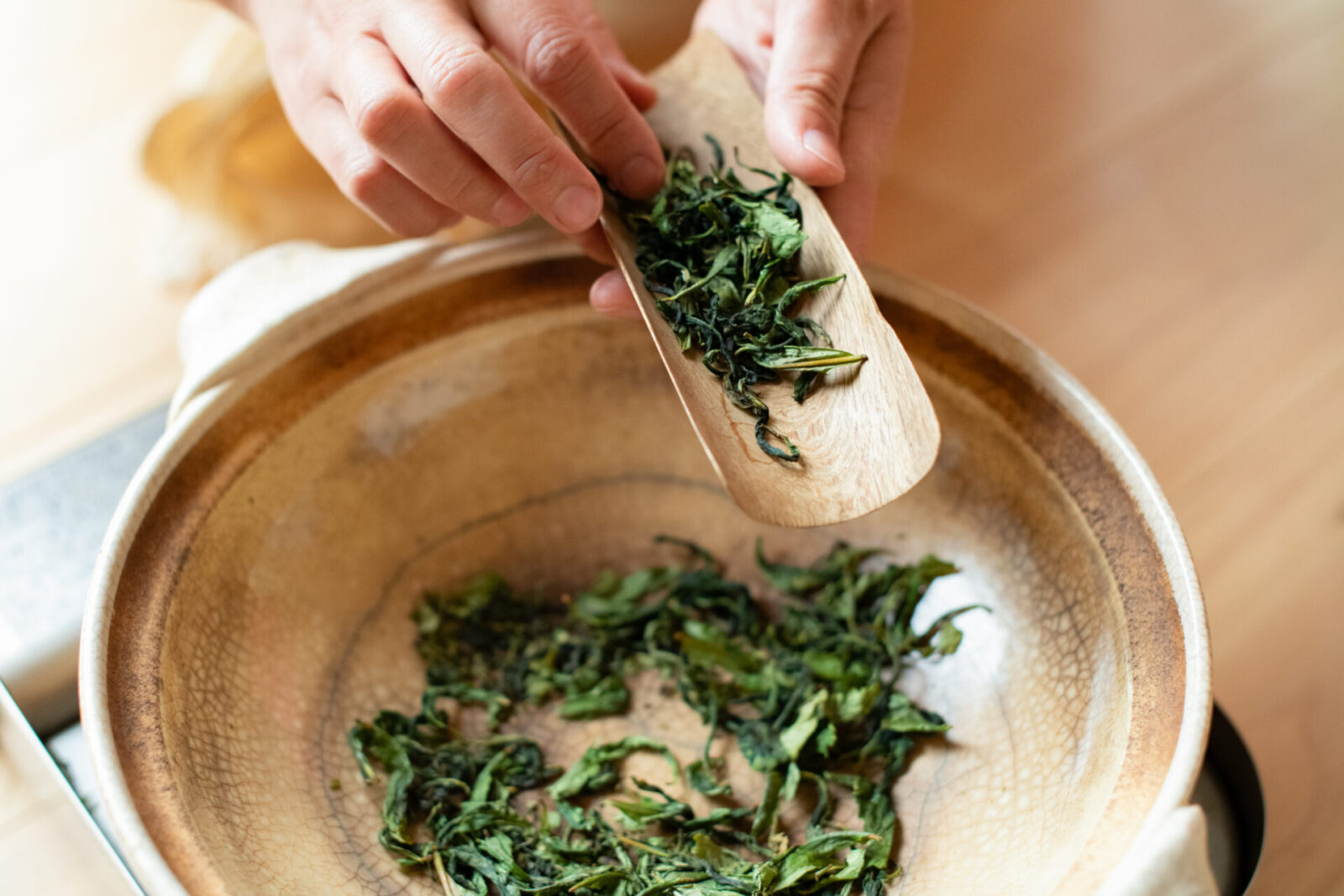

The freshly picked leaves have a fresh and rich aroma, and it was like tasting all the bounty of nature in one cup.
When Horiguchi holds a tea event she often hears people say “I have been so busy lately that I don’t have time to drink fluids,” or “I feel more balanced after I come here.”
The time with tea offers them a moment away from their hectic lives to reflect on themselves and find balance in their minds and bodies.

Horiguchi smiles as she says “Tea is not just a simple blade of grass or leaf. It has a mysterious power.”
“Just as I get an adrenaline rush when I pick tea leaves and make tea, I think other people feel energized as well. I don’t have to explain anything, everyone has their own discoveries. They find what they really need for themselves. Tea is a vessel that carries that message and brings us harmony.”
People who are mesmerized by tea come together at Horiguchi’s tea ceremonies.
With a sense of wonder that melts the heart, there is a microcosm of the universe here.
Photo: Yuko Kawashima
Translation: Sophia Swanson
Editor. Born and raised in Kagoshima, the birthplace of Japanese tea. Worked for Impress, Inc. and Huffington Post Japan and has been involved in the launch and management of media after becoming independent. Does editing, writing, and content planning/production.
Editor and creator of the future through words. Former associate editor of Huffington Post Japan. Became independent after working for a publishing company and overseas news media. Assists in communications for corporates and various projects. Born in Gifu, loves cats.
